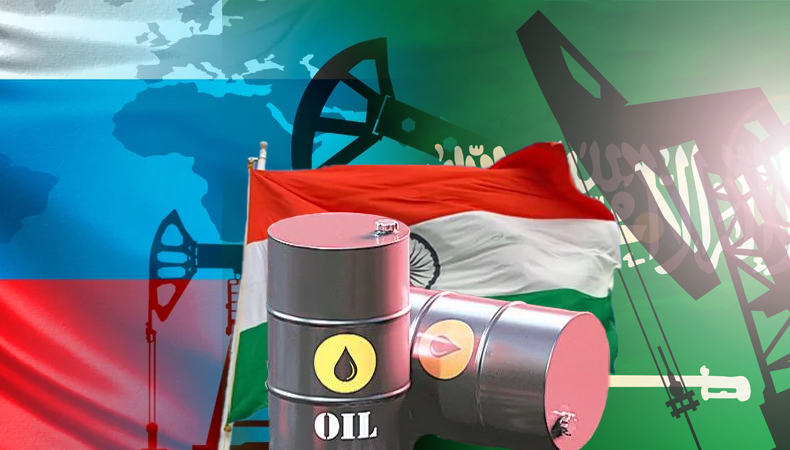Russia and Saudi Arabia battle for oil market share in Asia


According to reports, Indian refiners have purchased more long-term supplies from Saudi Arabia, the primary competitor of Russia, because Aramco’s price-setting approach has made its crude more appealing. At the same time, Russian prices rose due to strong demand.
In July, India raised its purchases of crude oil from the Kingdom at the same time that Saudi Arabia increased its output. According to industry data, India imported 877,400 BPD of oil from Russia in July, a 7.3% fall from June. Iraq continues to be India’s top supplier, followed by Russia.
India, the third-largest oil consumer and importer in the world, imported 3.2% less oil in July than in June. In total, it is estimated that 4.63 million BPD were produced in July. Refinery maintenance scheduled for August is cited as the primary cause of the drop.
Related Posts
Additionally, according to reports, Saudi Arabia delivered 824,700 BPD (25.6%) in July, the most immense amount in the previous three months. The fact that Aramco decreased the official selling price (OSP) of its oil in June and July may be a contributing factor to this adjustment. Due to long-term contracts with Saudi Arabia, the majority of Indian refiners are only able to marginally alter their volume.
The total volume of Middle Eastern crude oil imported by India last month decreased somewhat. Iraq was the hardest hit country, with export volumes falling below 1 million BPD for the first time in 10 months in July after a 9.3% volume reduction. India’s demand for Russian ESPO grades (diesel rich) has kept Russia strong up to this point, placing pressure on West African producers at the same time.
All eyes will be on India in the next few months as international pressure increases on Delhi to alter its pro-Russian oil policy. Delhi has come under pressure from the Biden Administration to purchase fewer Russian oil and petroleum products, which shows how methodical the administration has been in its strategy.
European nations appear to be following Washington’s example and attempting to persuade India to break its dependence on Russian energy. However, given that the majority of legislators are concerned about rising energy and food prices, the initial responses from the Indian government would seem to indicate that there is no actual desire to bow to this pressure.
There have been persistent rumours that Indian purchases of Russian crude and petroleum products are making their way to Western markets. If they don’t want it to become a domestic issue, Western governments will have to challenge India on these problems, especially in NW Europe. As the Petrologistics graph above demonstrates, Russian-Indian oil is still making its way to the Western markets.
Saudi Arabia, in the meantime, is gradually entering the Asian swing manufacturer market. Riyadh is always eager to defeat a rival, even if the Kingdom hasn’t shown any serious desire to reclaim market share in Asia. The Kingdom is gradually exerting pressure on others by boosting its official production volumes in June by 218,000 BPD to reach a level of 8.79 million BPD.
Saudi Arabia’s oil exports climbed by 20.1%, or 1.47 million BPD, on an annual basis in June 2022. Saudi Arabia’s crude exports grew by 146,000 BPD from month to month in June, reaching 7.2 million BPD. Despite the fact that Saudi Arabia’s oil inventory (crude oil and products) decreased by 1.01 million barrels per day in June, a full-scale production rise is not implied by the overall increase because there are still 234.7 million barrels available.
Markets will be keeping an eye on China’s economic market circumstances, India’s oil import tactics, and any potential internal OPEC+ market share disputes in the coming months. Although Riyadh and Moscow remain close partners, there are growing internal tensions and chances to reduce the rival’s market share. The latest EU oil sanctions may take some time to take effect, but they will force Russia to supply more oil to already overstretched markets.
The possibility of Western sanctions on third nations, particularly India and perhaps China, would provide the Kingdom with even more opportunities. Uncertainty surrounds whether Aramco or its neighbour ADNOC will profit from such a shift, although the world’s swing producer still has some oil production at its disposal. Saudi Arabia has much larger financial reserves than Moscow, which gives it more room to experiment with OSPs if necessary.







